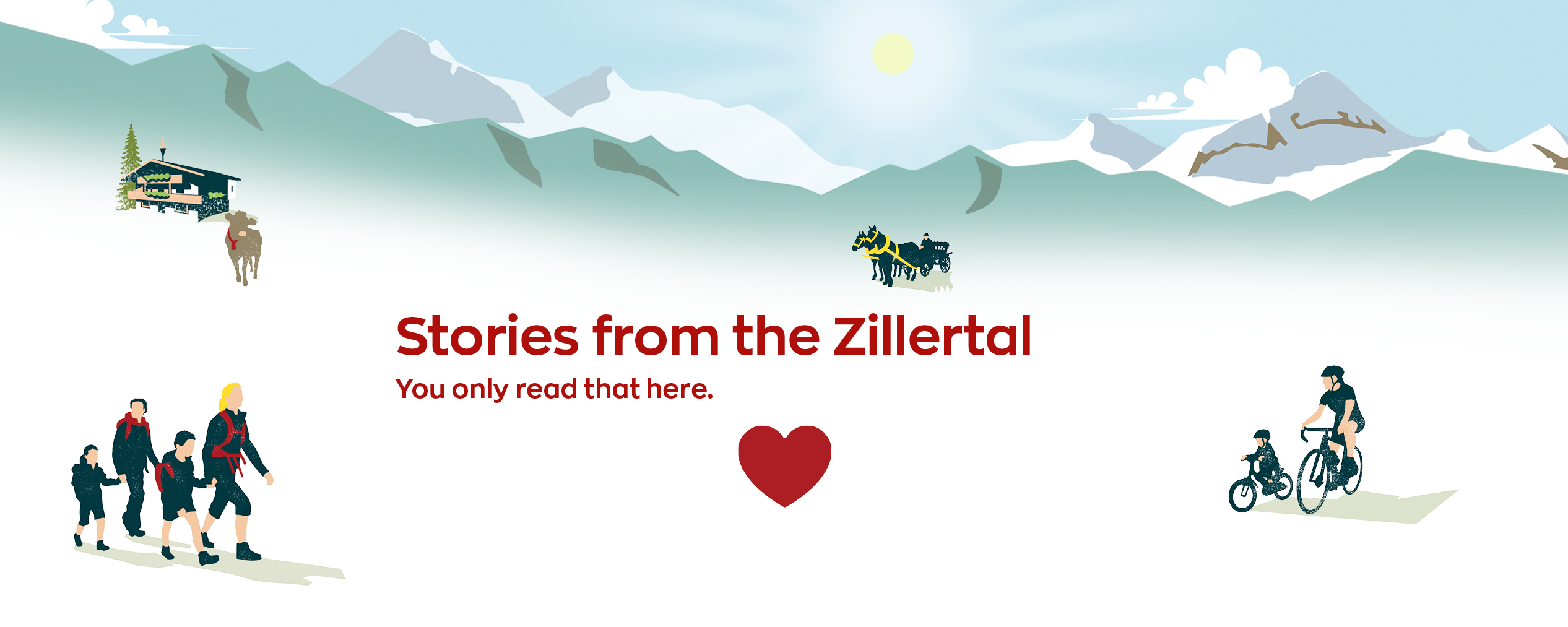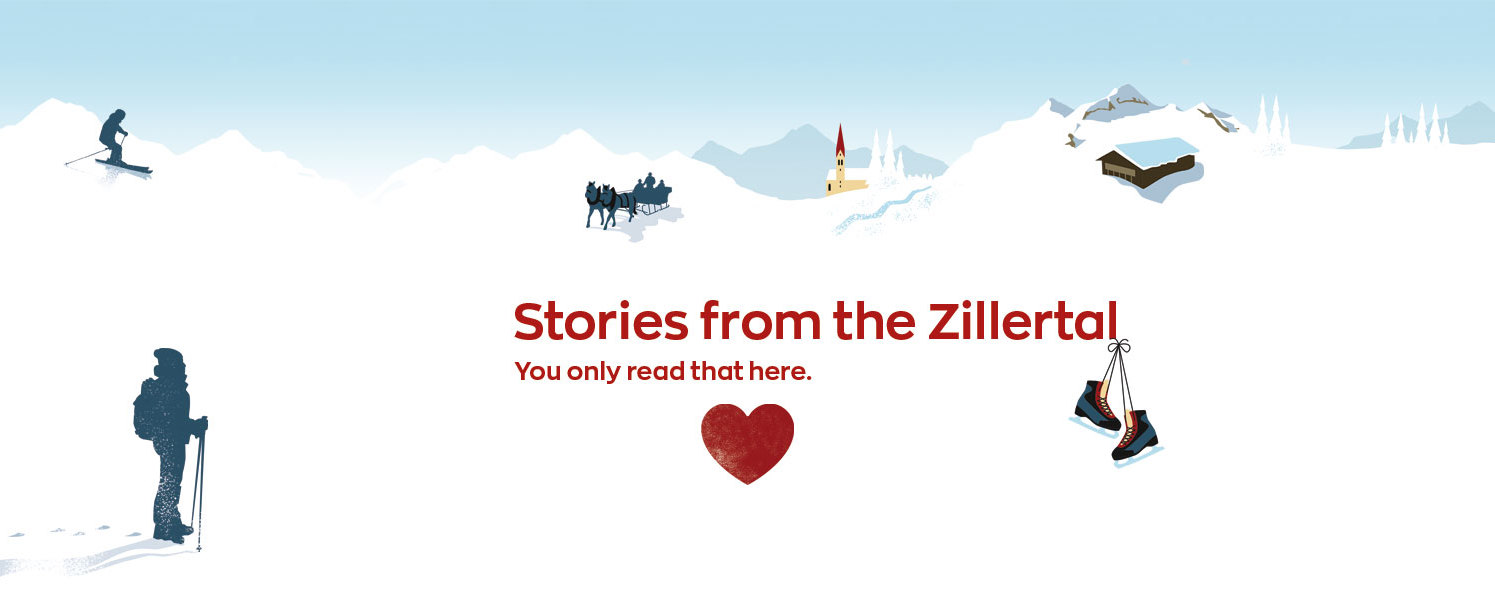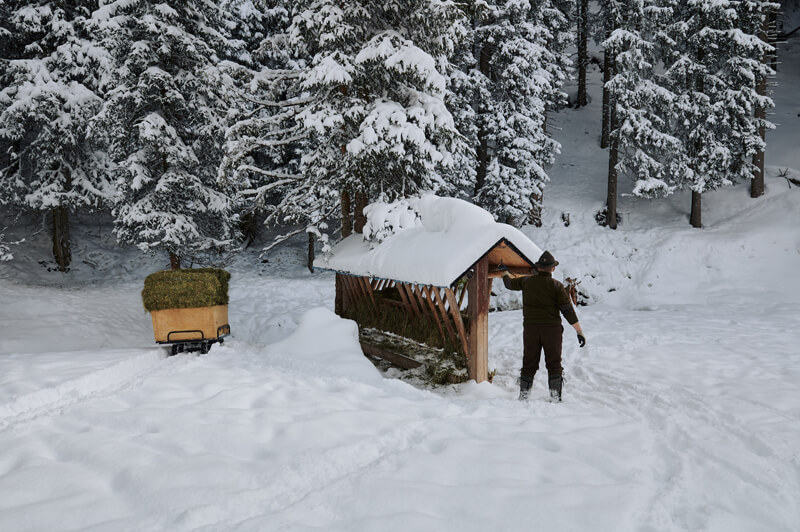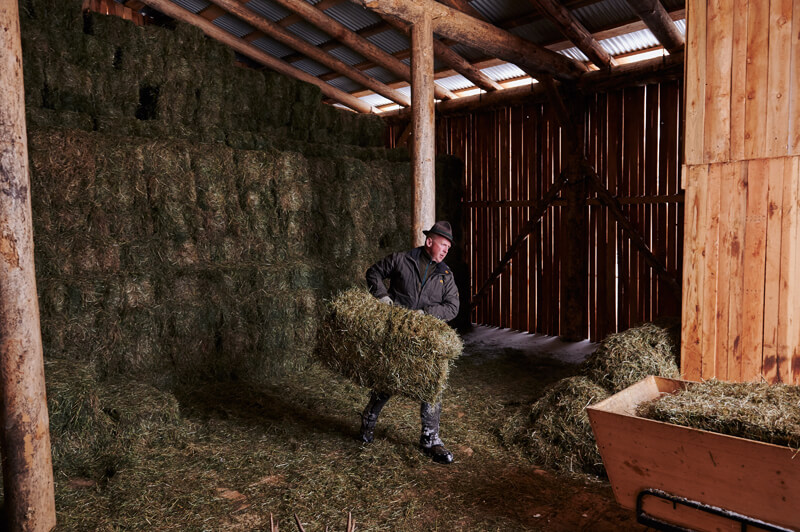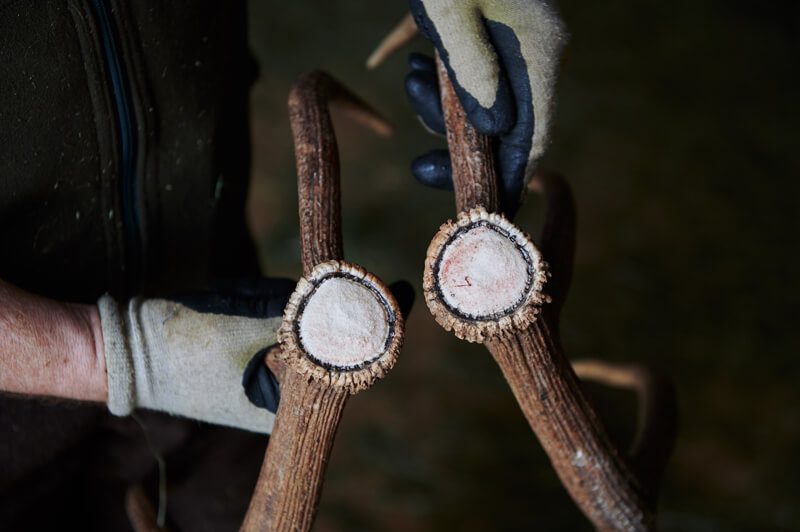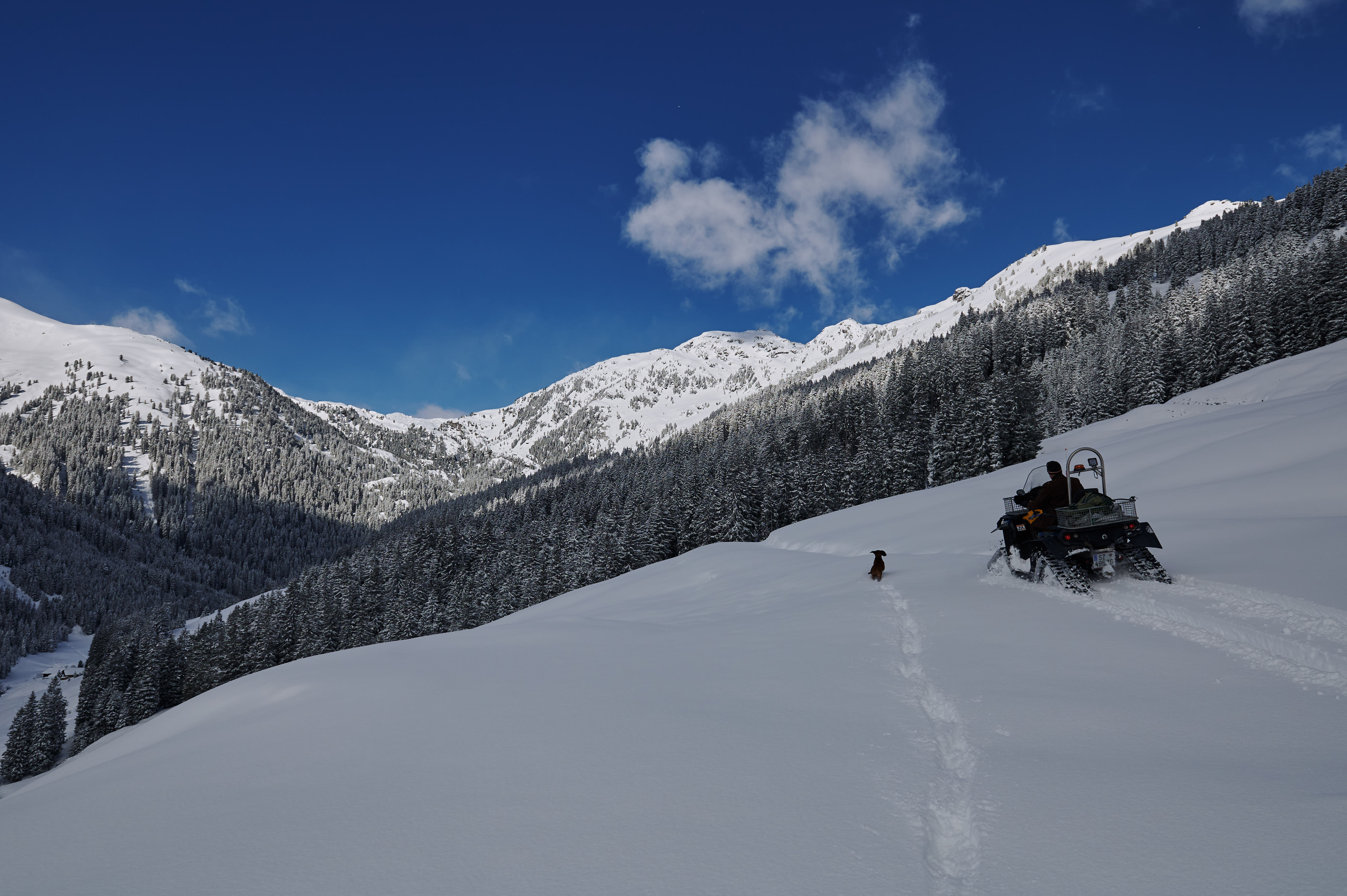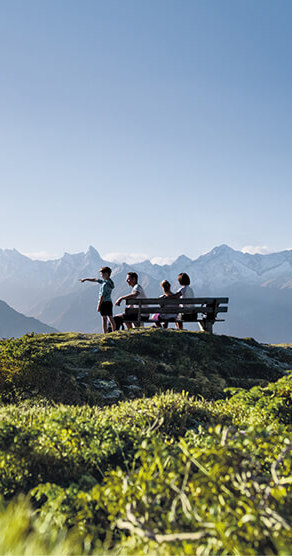
Stories to marvel
Wild Zillertal
A quiet guardian of wild animals
The glistening snow in a sunny winter landscape conceals the food for wild deer under a thick white blanket. That’s why hunters like Hermann Egger are underway in Zillertal to supply them with food. We accompanied this passionate guardian of wild animals.
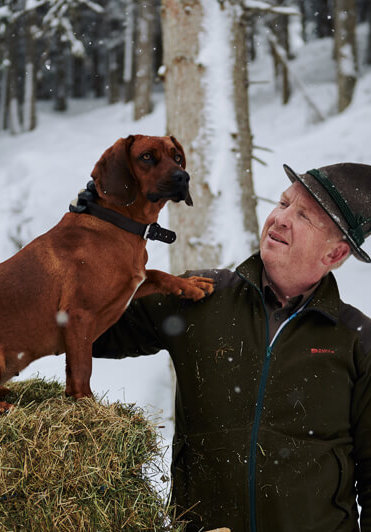
It is winter in Zillertal, the forests are covered in deep snow and radiating a deep calm. The same is true for many inhabitants of the forest such as the deer. They only do what is absolutely necessary. This is in sharp contrast to many winter enthusiasts who carve down the ski slopes or go off on their touring skis. But even in the forest it is never completely quiet. In the early morning hours, Hermann Egger has already finished loading his sled with hay. He is one of many experts who are responsible for the 140 forest regions in Zillertal, which extend from the valley floor across the mountain forests and up to the summit glaciers. In winter, he and his colleagues start out early to feed the wild animals.
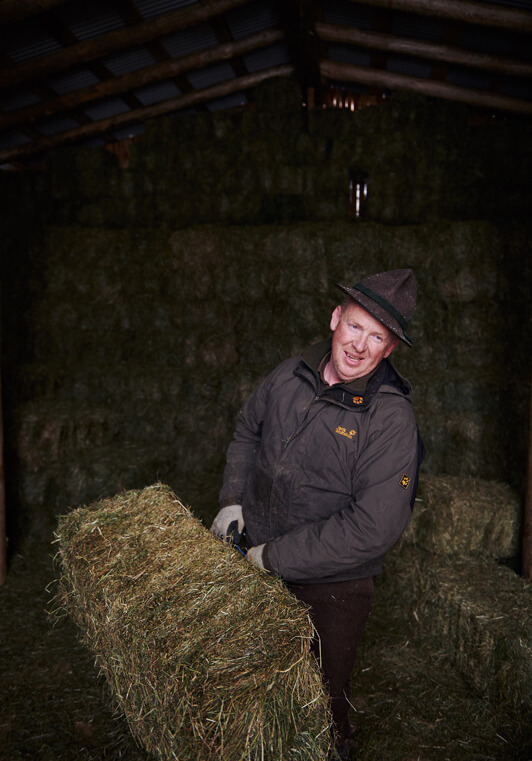
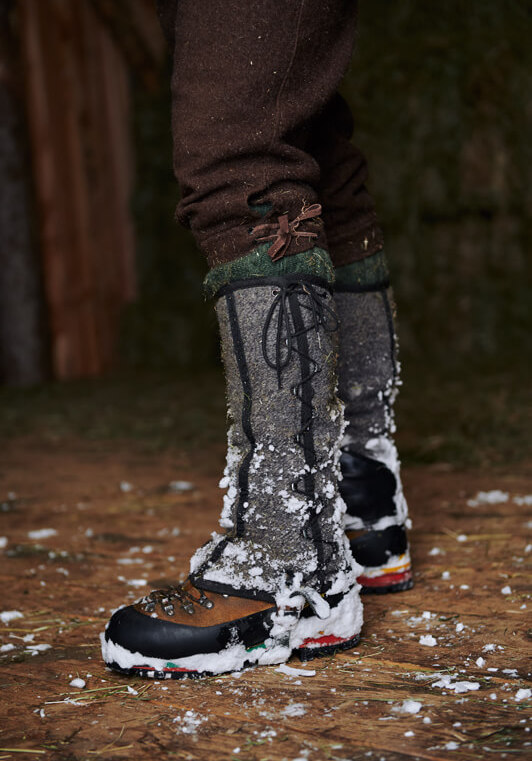
Vigilance and knowledge are important
Hermann Egger has to fill two hay racks with fresh hay. On days like this, his alarm goes off all too early – the way up to 1,700 metres of altitude is long. But he has long got used to it – after all, he has to feed the red deer every day. The roe deer are not quite as demanding. In many places, the hay is enough for several days. But there’s no dawdling around: “When the animals come to feed at around four o’clock in the afternoon, I must already be gone”, says Hermann Egger, aged 49. Before this, the wild animals hide in the forest so as to remain undisturbed. He tries as far as possible to leave the 150 wild animals in his district in peace, and he avoids direct contact with them.
“In January and February, the deer
need less food because their metabolism runs
at low speed.”
Professional hunter Hermann Egger
But why is it necessary to feed some forest inhabitants at all? In the past, the wild animals used to move down to the valleys in winter. In the deciduous forests and floodplains, the climate is milder and the animals could find more food. Today, this is often not possible: in many places, settlements, roads and other infrastructure are a hindrance to animal migration. Scientists have discovered that the wild deer greatly reduce their metabolic rate and body temperature in winter. They even reduce the size of their organs. Nevertheless, they are hungry and would easily be tempted to chew at the sprouts and bark of young trees. And this in turn would be no fun for the forester! Therefore, the animals are fed appropriately during the winter months. As Hermann Egger says, “In January and February, the deer need less food because their metabolism runs at low speed.” From March onwards he has tohay, he now also provides concentrated feed which is rich in raw fibres. From springtime onwards, he has completely different jobs to do: cleaning the hay racks, repairing the deerstands, observing the deer – and hunting, of course. Because there are no longer any natural enemies such as lynxes or wolves in Zillertal, the hunt is of great importance. If there are too many wild animals, the forest will suffer and lose its protective function.
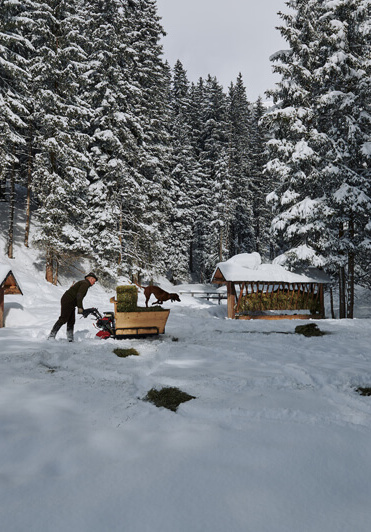
Whatever the season – Hermann Egger’s excursions into the forest are always of great importance. Especially in winter, he finds indications at the feeding places which allow him to deduce the animals’ state of health. Like this time: Egger is just stuffing hay into the rack when Kira starts to bark. His dog has found something. “Those are antlers”, he says and takes a look at them. “It looks like a healthy stag”. He can even tell how old an animal is, judging by when it drops its antlers: the older the animal, the earlier it drops its antlers in winter. And he can tell from the structure of the horn whether the deer has taken up sufficient nutrients.
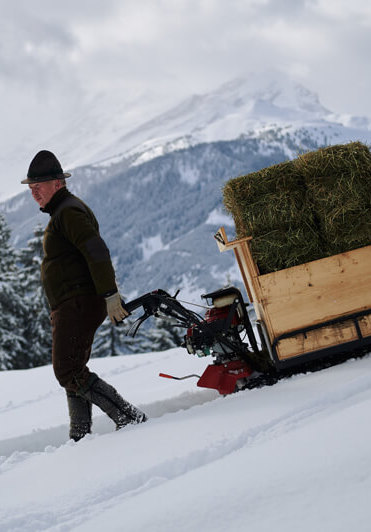
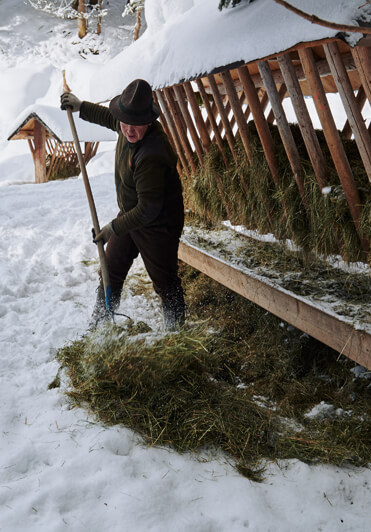
An appeal to nature lovers Hermann Egger pauses before returning to the valley: “Unfortunately, the animals are often scared by thoughtless humans”. In a state of shock, the deer use up far too much energy. This can mean that they are then too weak to reach their food. So, if you ever spy animals when you are on a ski lift, in a cable car or on a winter tour, you should keep quiet and admire them until they disappear back into the forest. After all, vigilance must always have top priority!
Image: Thomas Straub and text: Willi Seifert
Zillertal magazine Winter 2019/20
Even more stories from the Zillertal
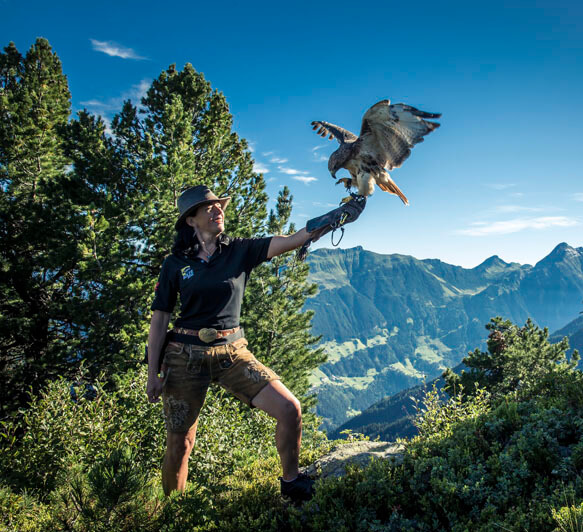
A majestic show
The Adlerbühne Ahorn is the highest bird of prey station in Europe. At an altitude of 2,000 metres, these Zillertal Alps sky aesthetes truly live up to their name. And they are only one wing flap away.
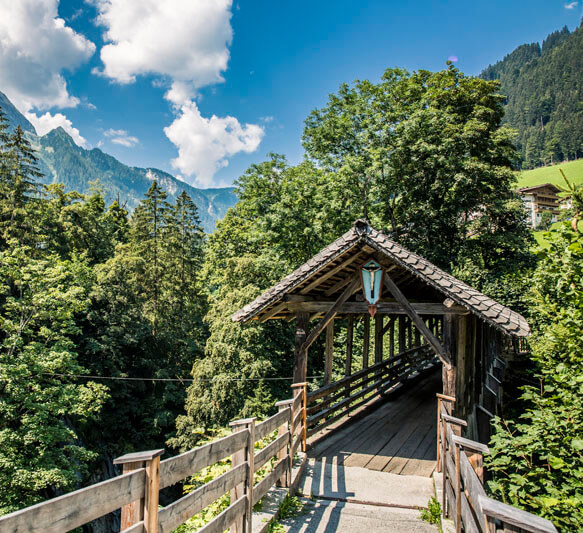
The mystical forest
Dive into the enchanting world of the “Glocke” on a magnificent summer’s day. The fauna and flora in the High Alps Nature Park Zillertaler Alps take us back to an era long before our time.
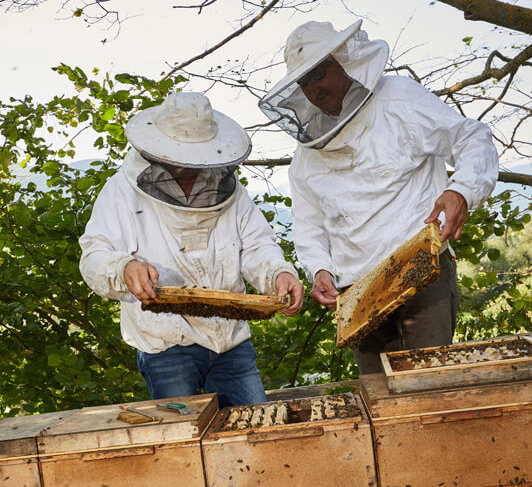
The precious elixir of bees
Colonies of bees all over the world are fighting to survive, whereas the life of Maya the Bee and her friends in Zillertal is just a picnic! This is due to environmentally friendly farming methods.
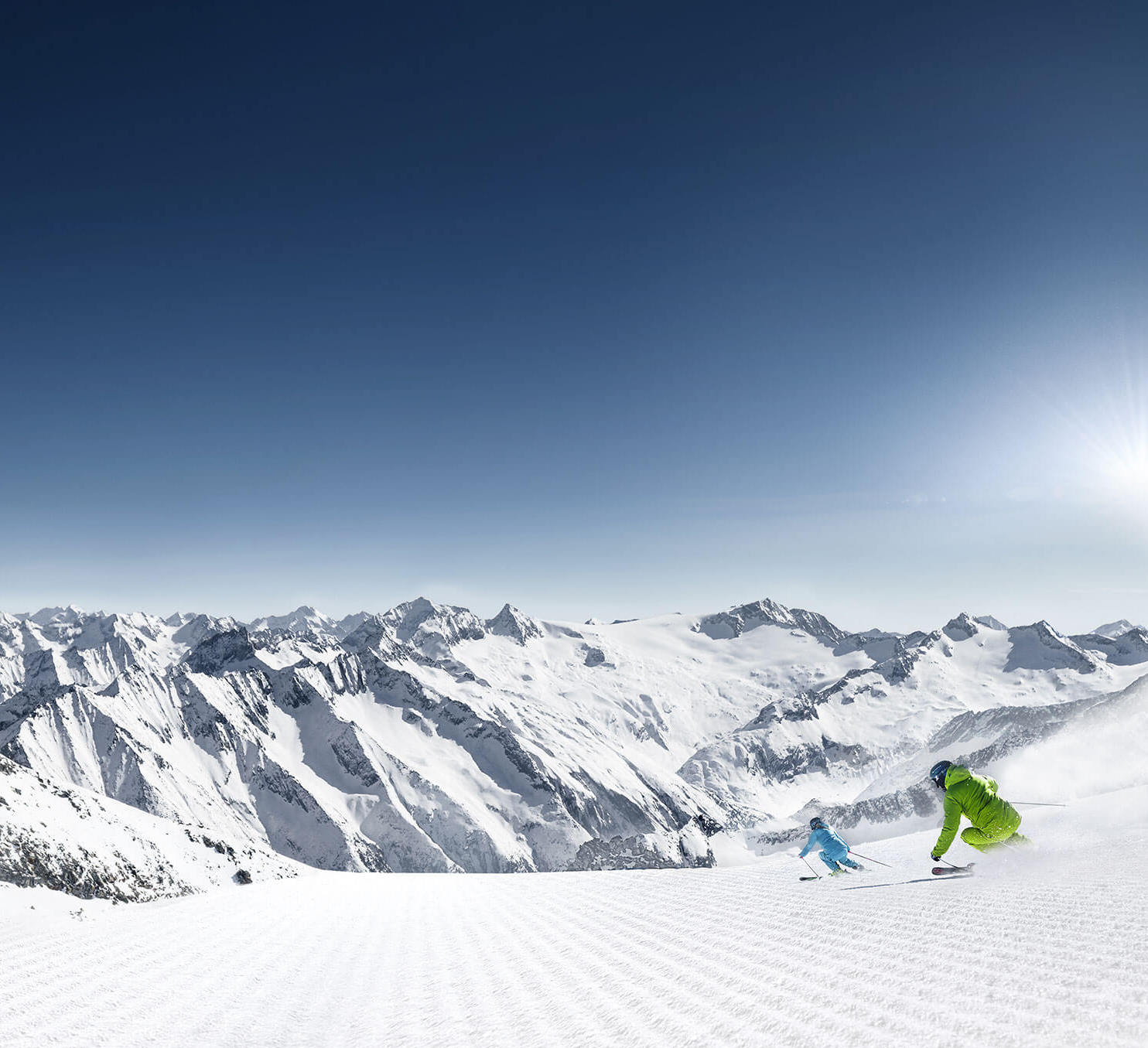
Zillertal
Welcome to Zillertal! Where sun, snow and well-being become the meaning of life and where great freedom tempts you to let go.

Cuisine in Zillertal
Award-winning traditional inn, toque-holding restaurants, romantic lodges and stylish mountain restaurants guarantee unique taste experiences.

Hosts in Zillertal
Find the right accommodation for your perfect winter holiday in Zillertal – from cosy private rooms to luxury five-star hotels.

Getting to Zillertal
Zillertal is located in the west of Austria and is the widest of the side valleys on the south side of the Inntal Valley. Get to Zillertal safely and comfortably.
